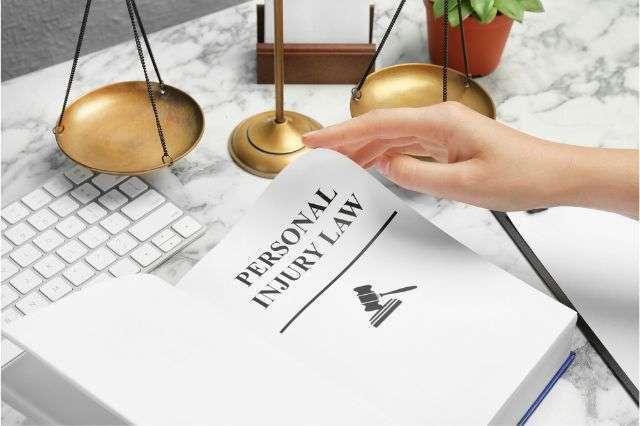The Importance of Documenting Your Personal Injury for Your Case
Nobody wants to be involved in a serious accident, but the unfortunate truth is that personal injury cases are extremely common. In fact, slip and fall accidents account for over one million doctor visits yearly, serving as just one single type of potential personal injury case. Learning everything you need to prove through documentation to win a personal injury lawsuit can help anybody increase their odds of success.
What is a Personal Injury Lawsuit?
For those unfamiliar with this type of lawsuit, personal injury occurs when one party is injured as a result of another person’s negligent actions. The other party that caused the injury can either be a person or an organization, which allows personal injury lawsuits to be quite broad. The point of a personal injury lawsuit is for the court to determine whether or not the party being sued is actually at fault for what occurred, either completely or partially.
Besides negligence, a personal injury lawsuit can also arise from intentional acts or strict liability. In deliberate actions, the suit comes forth due to the intentional harm caused by another individual, such as assault. In strict liability cases, the law holds an individual or entity liable for causing damage, even without proof of negligence or fault, as seen in cases involving defective products.
Impact of Personal Injury
It’s worth noting that personal injuries can have lasting impacts on individuals, affecting their physical health, mental well-being, and financial stability. For starters, long-term consequences may include chronic pain, emotional distress, and substantial medical bills. The ongoing effects of such incidents underscore the importance of pursuing compensation through personal injury lawsuits to mitigate their impact.
However, dealing with a personal injury case can often feel daunting and intimidating. This is where the expertise and guidance of a personal injury lawyer can be invaluable. By working with a legal professional, you can receive the necessary assistance to navigate the complexities of your case and increase your chances of receiving fair and appropriate compensation for your injuries.
Common Types of Personal Injury Cases
There are a variety of types of personal injury cases that are commonly seen, but the following are by far the most prominent:
- Slip and fall accidents in public locations
- Vehicle-on-vehicle or vehicle-on-pedestrian accidents
- Animal attacks such as an off-leash animal
- Medical malpractice lawsuits
- Product defects
- Workplace accidents
The above are just the tip of the iceberg in regard to personal injury lawsuits. A personal injury case can theoretically occur in any situation so long as it meets the criteria for what a personal injury lawsuit is.
Related: All About Financial Impact of a Workplace Injury
Documents Needed for the Personal Injury Claim Process
Whether you are just learning about what a personal injury lawsuit is or you have already gone through one in the past, learning what documents are required during the process can help it go more successfully. For any case-specific documentation that you may need, it’s best to consult your personal injury lawyer for advice so that you gather everything you need in addition to the below:
- Medical reports from a certified professional
First and foremost, you need to prove that an injury actually took place which required medical attention. To do so, you will need to show proof of medical records from a certified professional. These records could be signed treatment forms, admittance to hospitals, or something similar.
- Law enforcement reports from the incident
It can be beneficial to have reports from law enforcement if they were present at the scene of the accident or if they were called after the accident happened. These reports will often contain initial discussions with witnesses to the accident which could demonstrate who was potentially at fault for the accident, whether it be your own actions or the negligent actions of the other party.
- Photos of the scene of the accident
Photos can truly speak a thousand words and having evidence of the scene can make a major difference in a personal injury lawsuit case. For example, if you were struck by a driver who barreled through a red light and wasn’t paying attention, they may argue that you didn’t look to see if they were coming. However, a photo that shows there is no obstruction to the view of the road from the sidewalk could disprove this claim.
- Witness statements from anyone who viewed the incident
Similar to gathering reports from law enforcement, gathering any statements from witnesses who saw what occurred can be beneficial. Even if it is someone who only briefly saw what happened, some account of the accident is better than no account at all when trying to prove your case. Be aware that witnesses may not always be reliable, however, or on your side of the argument.
- Any applicable bills related to the accident
Similar to showing proof of medical records, you should also show proof of any bills you have paid to show that damages actually existed. Whether it is bills directly related to an injury from your accident or something that stemmed from your injury, showing proof of bills can demonstrate the extent of damages.
- Video evidence
Videos can also be pivotal, offering real-time insight into the incident and allowing for a more comprehensive understanding of the event’s unfolding.
By securing all pertinent and requisite documentation, you can effectively move through and push a personal injury claim forward, ensuring that every aspect of the case is substantiated and corroborated.
Protect yourself legally and financially today
Ensuring you provide everything the court needs when trying to win a personal injury lawsuit will increase your chances of success and expedite the entire process. Consult with your personal injury lawyer to discuss any case-specific documentation you may also need to bring. The majority of personal injury lawsuits end with a settlement before they ever see a trial, which is why ensuring you have everything you need to prove your case is so important.





